 A research breakthrough demonstrates a new mechanism to control temperature and extend the lifetime of electronic and photonic devices such as sensors, smart phones and transistors.
A research breakthrough demonstrates a new mechanism to control temperature and extend the lifetime of electronic and photonic devices such as sensors, smart phones and transistors.
Wednesday, December 9, 2020
Engineering discovery challenges heat transfer paradigm that guides electronic and photonic device design
 A research breakthrough demonstrates a new mechanism to control temperature and extend the lifetime of electronic and photonic devices such as sensors, smart phones and transistors.
A research breakthrough demonstrates a new mechanism to control temperature and extend the lifetime of electronic and photonic devices such as sensors, smart phones and transistors.
'Sparkling' clean water from nanodiamond-embedded membrane filters
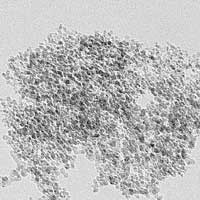 Researchers have embedded amine-enhanced nanodiamond particles into membranes to purify water.
Researchers have embedded amine-enhanced nanodiamond particles into membranes to purify water.
Discovery suggests new promise for nonsilicon computer transistors
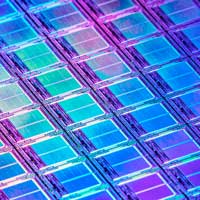 Once deemed suitable only for high-speed communication systems, an alloy called InGaAs might one day rival silicon in high-performance computing.
Once deemed suitable only for high-speed communication systems, an alloy called InGaAs might one day rival silicon in high-performance computing.
Atom-thin transistor uses half the voltage of common semiconductors, boosts current density
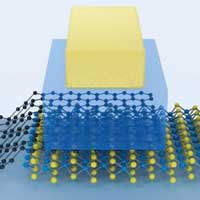 Researchers are reporting a new, two-dimensional transistor made of graphene and the compound molybdenum disulfide that could help usher in a new era of computing.
Researchers are reporting a new, two-dimensional transistor made of graphene and the compound molybdenum disulfide that could help usher in a new era of computing.
Ultrafast dynamics of chiral spin structures observed after optical excitation
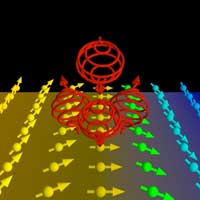 Investigation of femtosecond time-resolved x-ray scattering signals reveals a faster chiral compared to collinear magnetic order dynamics.
Investigation of femtosecond time-resolved x-ray scattering signals reveals a faster chiral compared to collinear magnetic order dynamics.
'Game changer' perovskite can detect gamma rays
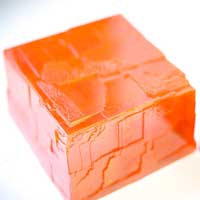 Scientists have developed a game-changing perovskite material that can be used as a cheaper and highly efficient alternative to gamma-ray detectors.
Scientists have developed a game-changing perovskite material that can be used as a cheaper and highly efficient alternative to gamma-ray detectors.
Research on semiconductors: Light weakens magic nanoclusters
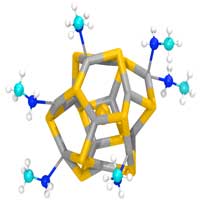 They are known as 'magic sized nano clusters' because they have special properties: The particles consist of only a few atoms, but since they are arranged in a special crystal structure, they are extremely stable. Unless you expose them to light.
They are known as 'magic sized nano clusters' because they have special properties: The particles consist of only a few atoms, but since they are arranged in a special crystal structure, they are extremely stable. Unless you expose them to light.
New blended solar cells yield high power conversion efficiencies
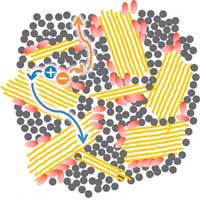 Researchers have blended together various polymer and molecular semiconductors as photo-absorbers to create a solar cell with increased power efficiencies and electricity generation.
Researchers have blended together various polymer and molecular semiconductors as photo-absorbers to create a solar cell with increased power efficiencies and electricity generation.
Energy-efficient magnetic RAM: A new building block for spintronic technologies
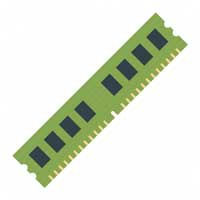 Researchers have developed the first prototype of a non-volatile magnetic memory device entirely based on a nanometer-thin layered material, which can be tuned with a tiny current.
Researchers have developed the first prototype of a non-volatile magnetic memory device entirely based on a nanometer-thin layered material, which can be tuned with a tiny current.
Shining a light on what's really happening in perovskite solar cells
 Researchers take a molecular-level look at what happens in perovskite solar cells when they are operating, to determine the factors that affect their performance.
Researchers take a molecular-level look at what happens in perovskite solar cells when they are operating, to determine the factors that affect their performance.
Filming roaming molecular fragments in real time
 Scientists have succeeded in shooting the first molecular film of 'roamers' (hydrogen fragments, in this case, that orbit around HCO fragments) during a chemical reaction, by studying the photo-dissociation of formaldehyde, H2CO.
Scientists have succeeded in shooting the first molecular film of 'roamers' (hydrogen fragments, in this case, that orbit around HCO fragments) during a chemical reaction, by studying the photo-dissociation of formaldehyde, H2CO.
Subscribe to:
Comments (Atom)
